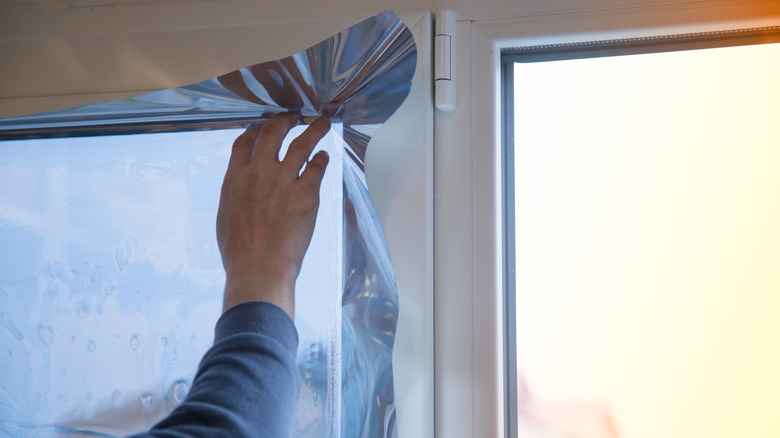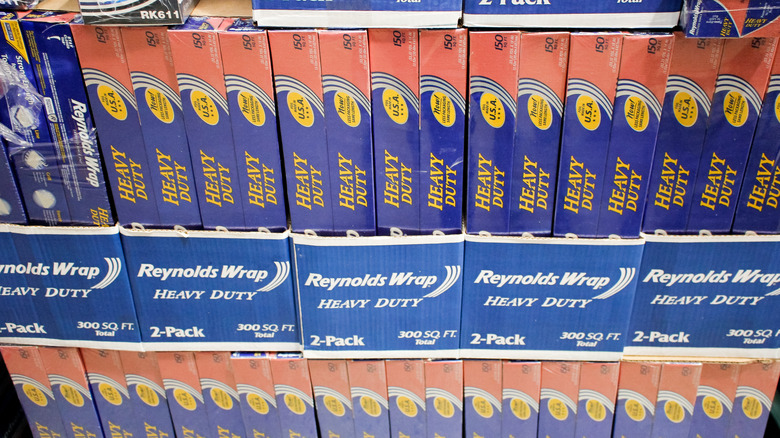The Biggest Mistake You Can Make When Lining Your Windows With Aluminum Foil
It might not be the most aesthetically pleasing way to cool your home, but looks get a lot less important when there's a heat wave. Lining windows with aluminum foil is a time-honored way to bounce heat away from your home, keeping the interior much cooler. That's because windows aren't good insulators. Not only do they let cold air through, but they also turn the sunlight into actual heat. When the rays pass through the glass, they turn into thermal energy, and since they can't escape the room, they raise the temperature inside.
This, of course, isn't ideal for a few reasons. First, if you only have a fan or window unit, it becomes very difficult to cool the room to a comfortable temperature. Second, if you have central air, the system will constantly keep running to cool that thermal heat, resulting in higher energy bills. But you can help nix that with aluminum foil on the windows. However, for the best results, make sure you're placing the foil on the right part of your window.
Why covering the inside of your window is a mistake
When attempting this cooling hack, most people assume that covering the inside of their windows with aluminum foil is just as good as covering the outside. After all, it will still bounce the heat away from the window, ultimately keeping the room cool. However, you'll get much better results if you cover the outside of the window instead. That's because if you line the inside, the window will still get extremely hot. The rays of sunshine will still pass through the pane, meaning that the heat is still getting inside your house. Instead, you want to reflect it entirely away.
In addition to this, if the window gets too hot, it can become damaged. The pane absorbs the heat but has nowhere to go, so the glass expands and can potentially crack. To prevent this, foil the outside of your window instead.
Some caveats to keep in mind
There are still some caveats to keep in mind. As mentioned above, window panes that absorb too much heat are at risk of cracking. While the foil will bounce heat away from the window, some will still inevitably get through. You can protect your windows from cracks by doing one of two things. First, invest in thicker heavy-duty foil. Regular aluminum foil is relatively thin and won't reflect heat for long. That means the heat will start bleeding through to the window pane behind it. Instead, invest in a roll that's thicker and will last longer.
Second, consider first lining your windows with cardboard before putting aluminum foil on top. This will act as an extra protective layer, absorbing any heat that will penetrate through and keeping your glass nice and cool. It will also prevent any aluminum residue from getting on your windows, which can be a pain to scrape off.

